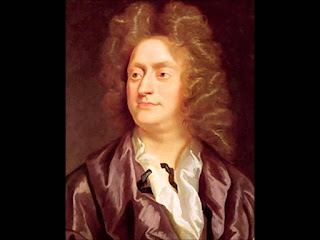Vocal Music
- Most Glorious Lord of Life – W. H. Harris (1883-1973)
- Ave Verum Corpus - Camille Saint-Saens
- O Sons and Daughters, Let Us Sing – Wilbur Held (1914-2015)
- Rejoice, beloved Christians, BWV 755 – J. S. Bach (1685-1750)
- Good Christians all, rejoice and sing – John Leavitt (b. 1956)
- Hymn 494 - Crown him with many crowns (Diademata)
- Hymn 205 - Good Christians all, rejoice and sing (Gelobt sei Gott)
- Hymn 206 - Alleluia! O songs and daughters, let us sing (O filii et filiae)
- Hymn 193 - That Easter day with joy was bright (Puer Natus)
- Hymn 178 - Alleluia, alleluia! Give thanks (Alleluia No. 1)
- Hymn 492 - Sing, ye faithful, sing with gladness (Finnian)
The congregation is singing the quintessential Second Sunday of Easter hymn, O Sons and Daughters, let us sing. It's suitable for this day because of the reference to the disciple Thomas, who was not present when Christ first appeared to the other apostles.
 |
| The Incredulity of Saint Thomas - Caravaggio, c. 1601–1602 |
When Thomas first the tidings heard,The tune name, O filii et filiae, comes from the opening line in its original language, Latin.
how they had seen the risen Lord,
he doubted the disciples' word.
Alleluia!
"My piercèd side, O Thomas, see;
my hands, my feet, I show to thee;
not faithless but believing be."
Alleluia!
How blest are they who have not seen,
and yet whose faith has constant been;
for they eternal life shall win.
The opening voluntary is a set of variations on that ancient hymn. Wilbur Held, composer of the voluntary, died on March 24, 2015 in Claremont, California, a few months shy of his 101th birthday. He was born in Des Plaines, Illinois. He studied piano as a youngster and became serious about the organ in high school, going on to attend the American Conservatory of Music in Chicago where he studied organ and began to develop his compositional voice.
A conscientious objector, Held spent the final years of World War II cooking food without vitamins for a path-breaking project on nutrition now known as the Minnesota Semi-Starvation Experiment. Its findings were later published as The Biology of Human Starvation.
In 1946 Held was named professor of organ at The Ohio State University for what became a 30-year tenure. His organ studio grew quickly. Held was also able to significantly expand the church music program at OSU. Sadly, both the organ and church music degrees were phased out after his retirement.
The Bach setting of Nun fruet euch ("Rejoice, beloved Christians"), is a three-part fughetta (not the perpetual motion trio version) that is not reliably attributed to Bach. As Hermann Keller says, it is
The Bach setting of Nun fruet euch ("Rejoice, beloved Christians"), is a three-part fughetta (not the perpetual motion trio version) that is not reliably attributed to Bach. As Hermann Keller says, it is
a neatly worked-out piece that would do credit to any of Bach's contemporaries, but without reasonably clear traces of Bach's style.









